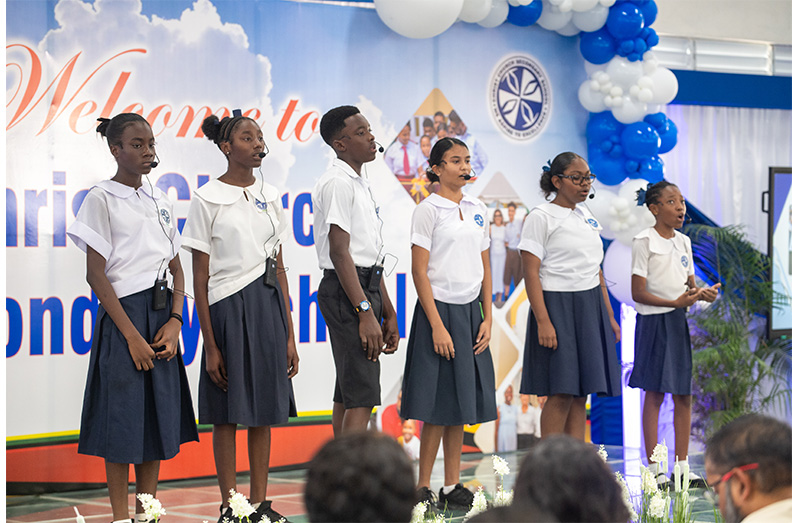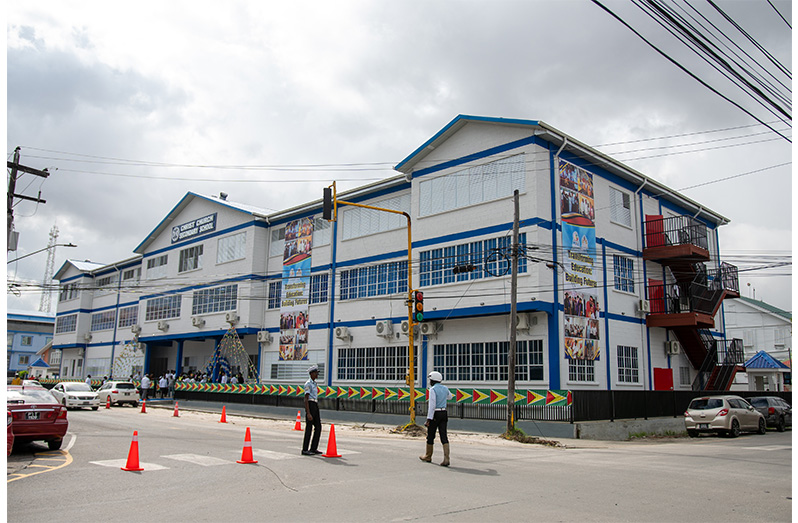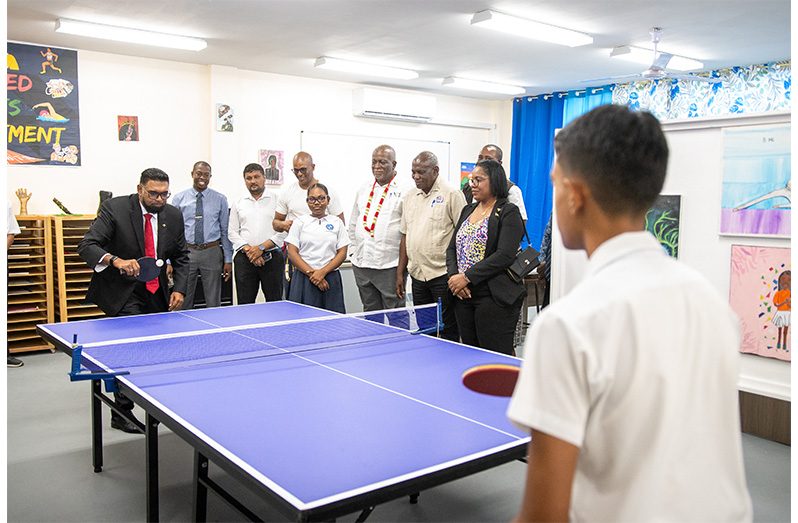-President Ali says at commissioning ceremony
-emphasises government’s commitment to uplifting young people, providing ‘bridges’ to opportunity, avenues for success
NOW equipped with modern laboratories and a multipurpose indoor facility, the Christ Church Secondary School was on Thursday commissioned by President Dr. Irfaan Ali.

Back in 2023, the school which had stood as a landmark and a testimony to Guyana’s education system had been maliciously set a blaze, destroying the then two storey wooden building.

“A cruel hand was dealt to the school, its students and staff in a matter of hours, decades of memories, tradition and dreams were reduced to ashes… but today, with hearts full of pride and eyes lifted toward promise, we declare without hesitation and without apology, Christ Church is back in business, the business of education, empowerment and enlightenment,” President Ali said as students and teachers filled the school’s spanking new auditorium with applauses.
Dr. Ali noted that the tragedy had not only damaged the physical infrastructure but also disrupted the daily routines of hundreds of students and educators. However, he emphasised that the government was committed to rebuilding the school and ensuring that students could continue their education without further interruption.
“These are not just buildings. They are bridges to opportunity. They are declarations that every child matters, no matter where they are born or what their last name is…every corner of Guyana from the coast to the savannahs, I’ve been opening doors, doors that will never be again closed to our young people.”
The President further noted that the government is making strategic investments in the education sector and while there is a heavy push for enhanced infrastructure, simultaneous investments in ensuring that universal education is achieved and educators are well trained to give the nation’s children the best chance of succeeding.

In fact, he noted that by the end of 2026, Guyana will achieve universal secondary education.
“Secondary education is that bridge between childhood and citizenship. It is a foundation upon which careers are built, and nations are developed. It is the gateway to higher education and upward mobility, entrepreneurship and economic independence,” President Ali said.
He stressed that it is at the secondary level that children are nurtured. “Secondary education drives economic growth. An educated workforce attracts investment, boosts productivity and ensures the development is not a privilege, but a shared national experience.”
Meanwhile Education Minister Priya Manickchand noted that the government’s continued investments in the education system are not simply about erecting new buildings but ensuring that children across the country have access to a solid education.
“Whichever school they get to, because you know that with us training teachers, with us providing the textbooks, with us providing the resources like smart classrooms, your children are going to get a solid education wherever they go, that’s the dream.”
She pointed out that equally important is the training of educators. In Georgetown the percentage of trained teachers in 2020 was 73 per cent and in 2025 it is 98.5 per cent.
Head Teacher of the school, Monet Greene-Pitt stated that the ceremonial commissioning marks not just the opening of a new school building but also the revival of a legacy lost in a past tragedy, which strengthened their determination to maintain excellence.
She described the new facility as a modern structure that represents possibilities, pride, and a future filled with dreams and achievements for the students of Christ Church Secondary School.
“Today, as we look at this beautiful, modern facility, we see more than just breath and martyr. We see possibilities. We see pride. We see a future that will uniquely be created for each student of Christ Church Secondary School.”
On January 23, 2023, Christ Church Secondary School was gutted by a maliciously set fire, affecting 560 students.
After discussions with teachers and parents, students were housed at the Cyril Potter College of Education, while construction of a new building began in March of that same year.
Despite students being displaced, the school recorded an improved matriculation rate from 38 per cent to a 65 per cent.
In September 1964, the then Government of Guyana, in an effort to promote free secondary education, had its first experiment in this regard when it merged the secondary departments of St. Ambrose Anglican, Kingston Methodist and St. George’s Anglican schools with the Secondary Department of Christ Church Anglican to form what is presently known as the Christ Church Secondary School.
The new $940.7 million facility now houses 20 classrooms with the capacity to accommodate 30-40 students in each along with eight laboratories.



.jpg)










